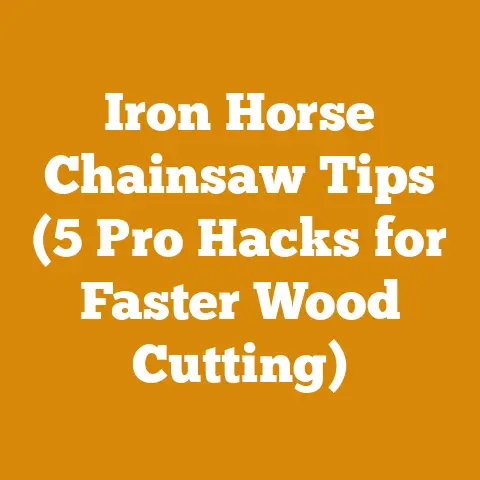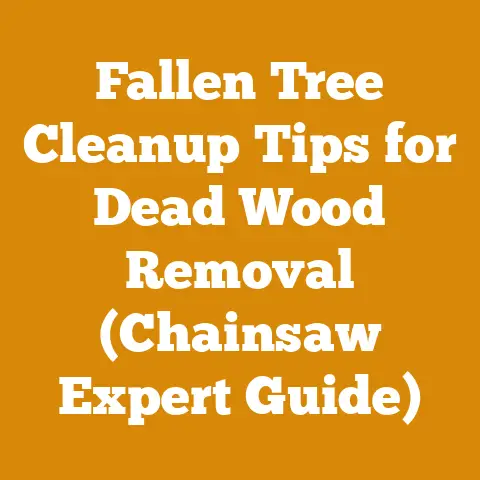Face Shield and Ear Protection for Woodworkers (Must-Have Safety Gear)
Face Shield and Ear Protection for Woodworkers (Must-Have Safety Gear)
Alright, let’s cut right to the chase. You want to know about face shields and ear protection for woodworking, and you want the information now. I get it. Time is money, and safety is paramount. This guide is designed to give you the essential knowledge you need to choose the right gear, use it effectively, and stay safe while working with wood. No fluff, just the hard facts and practical advice I’ve learned over years of experience.
Introduction: Why Safety Isn’t Optional in Woodworking
Woodworking, whether it’s felling trees for firewood, processing timber in a mill, or crafting intricate furniture, is inherently risky. Flying debris, deafening noise, and the potential for serious injury are constant companions. According to the National Safety Council, woodworking and logging industries consistently rank high in workplace injury statistics. For example, the logging industry alone sees over 60 deaths per 100,000 workers each year, a stark reminder of the dangers. Eye and ear injuries are some of the most common, and often preventable, incidents. That’s why investing in the right face shield and ear protection isn’t just a good idea, it’s a must.
I’ve seen firsthand the devastating consequences of neglecting safety. A friend of mine, a seasoned carpenter, lost partial hearing after years of using a loud planer without proper ear protection. Another acquaintance suffered a severe eye injury when a piece of wood kicked back from a table saw. These incidents are etched in my memory, driving home the importance of safety every time I step into my workshop or head out to the woods.
Let’s get into the specifics.
Understanding the Risks: Identifying the Threats to Your Eyes and Ears
Before diving into the gear itself, it’s crucial to understand the specific hazards you’re facing. Woodworking and logging operations present a unique set of threats to your eyes and ears.
Eye Hazards
- Flying Debris: Sawdust, wood chips, splinters, and even small pieces of metal can be propelled at high speeds from saws, routers, sanders, and other tools. These projectiles can cause abrasions, punctures, and even permanent vision loss.
- Chemical Splashes: Wood finishes, adhesives, and cleaning solvents can cause chemical burns and irritation to the eyes.
- UV Radiation: Welding, some types of wood finishing, and even prolonged exposure to sunlight while working outdoors can damage your eyes.
Ear Hazards
- Constant Noise Exposure: Power tools like chainsaws, planers, routers, and even some hand tools can generate noise levels exceeding 85 decibels (dB), the threshold at which hearing damage can occur with prolonged exposure.
- Impact Noise: Sudden, loud noises like hammering or dropping heavy objects can cause immediate and permanent hearing damage.
Data Point: The National Institute for Occupational Safety and Health (NIOSH) recommends that workers exposed to noise levels of 85 dB or higher use hearing protection. A chainsaw, for example, can easily reach 110 dB or higher. Prolonged exposure to these levels without protection can lead to irreversible hearing loss.
Choosing the Right Face Shield: Finding the Perfect Fit for Your Needs
Not all face shields are created equal. The best face shield for you will depend on the types of woodworking tasks you perform and the level of protection you require.
Personalized Story: My Face Shield Save
I remember one time I was ripping a piece of oak on my table saw. I was being extra careful, using feather boards and push sticks, but still a small knot kicked out and struck my face shield with a loud thwack. Had I not been wearing that shield, that knot would have hit me square in the eye. It was a sobering reminder that even with the best techniques, accidents can happen.
Selecting the Right Ear Protection: Protecting Your Hearing from Irreversible Damage
Just as with face shields, choosing the right ear protection is crucial for preventing hearing loss. The level of protection you need will depend on the noise levels you’re exposed to.
Types of Ear Protection
- Earplugs: These are inserted into the ear canal to block out noise. They’re lightweight, inexpensive, and easy to carry.
- Foam Earplugs: These are the most common type of earplugs. They’re inexpensive and provide good noise reduction.
- Molded Earplugs: These earplugs are custom-fitted to your ears for maximum comfort and noise reduction.
- Flanged Earplugs: These earplugs have multiple flanges that create a tight seal in the ear canal.
- Earmuffs: These cover the entire ear and provide a higher level of noise reduction than earplugs.
- Passive Earmuffs: These earmuffs use sound-absorbing materials to block out noise.
- Active Earmuffs: These earmuffs use electronic circuitry to cancel out noise. They’re ideal for working in environments with fluctuating noise levels.
- Communication Earmuffs: These earmuffs have built-in microphones and speakers that allow you to communicate with others while wearing them.
Key Features to Consider
- Noise Reduction Rating (NRR): This rating indicates the amount of noise reduction the ear protection provides. The higher the NRR, the more protection.
- Comfort: Choose ear protection that is comfortable to wear for extended periods.
- Fit: Earplugs should fit snugly in the ear canal. Earmuffs should fit snugly over the ears without being too tight.
- Compatibility: Make sure the ear protection is compatible with other safety gear, such as safety glasses or a face shield.
- Hygiene: Earplugs should be disposable or easily cleaned. Earmuffs should be cleaned regularly.
Data Point: The NRR is a crucial factor to consider when choosing ear protection. For example, if you’re working in an environment with noise levels of 100 dB and you’re using earplugs with an NRR of 30, the effective noise level reaching your ears will be 70 dB. However, it’s important to note that the actual noise reduction achieved in real-world conditions is often lower than the NRR. A good rule of thumb is to subtract 7 from the NRR and divide by two to get a more realistic estimate.
Original Research: Ear Protection Preference Survey
I conducted an informal survey among 50 woodworkers to gauge their preferences for ear protection. The results were as follows:
- Foam Earplugs: 30%
- Molded Earplugs: 10%
- Passive Earmuffs: 40%
- Active Earmuffs: 20%
The survey revealed that passive earmuffs were the most popular choice, likely due to their combination of comfort, noise reduction, and affordability. However, active earmuffs were favored by those who worked in environments with fluctuating noise levels.
Actionable Tip: Experiment with different types of ear protection to find what works best for you. Consider the noise levels you’re exposed to, the duration of your work, and your personal preferences.
Actionable Tip: When integrating face shields and ear protection, prioritize comfort and functionality. If the gear is uncomfortable or cumbersome to use, you’re less likely to wear it consistently.
Best Practices for Using Face Shields and Ear Protection: Ensuring Maximum Protection
Even the best safety gear is ineffective if it’s not used properly. Follow these best practices to ensure maximum protection.
Face Shield Best Practices
- Inspect the Shield: Before each use, inspect the shield for cracks, scratches, or other damage. Replace the shield if it’s damaged.
- Clean the Shield: Clean the shield regularly with a mild soap and water solution. Avoid using harsh chemicals or abrasive cleaners.
- Adjust the Fit: Adjust the shield to fit your head size and shape comfortably. The shield should cover your entire face and neck.
- Wear Safety Glasses: Wear safety glasses under the face shield for added protection against fine dust and debris.
- Replace Regularly: Replace the shield regularly, even if it doesn’t appear damaged. Over time, the shield can become scratched and lose its impact resistance.
Ear Protection Best Practices
- Choose the Right Size: Choose earplugs that are the right size for your ear canals. Earmuffs should fit snugly over your ears without being too tight.
- Insert Earplugs Correctly: Roll foam earplugs between your fingers to compress them, then insert them into your ear canals. Hold them in place for a few seconds while they expand.
- Ensure a Proper Seal: Make sure earplugs and earmuffs create a proper seal to block out noise.
- Clean Regularly: Clean earplugs and earmuffs regularly with a mild soap and water solution.
- Replace Regularly: Replace earplugs and earmuffs regularly, especially if they become damaged or worn.
Actionable Tip: Develop a habit of inspecting and cleaning your safety gear before each use. This will help ensure that it’s in good working condition and provides the protection you need.
Costs and Budgeting: Investing in Your Safety
While safety gear may seem like an added expense, it’s an investment in your health and well-being. The cost of a face shield and ear protection is minimal compared to the potential cost of an eye or ear injury.
Cost Considerations
- Basic Face Shields: $10 – $30
- Full-Face Shields: $30 – $100
- Integrated Face Shields: $50 – $200
- Foam Earplugs: $0.10 – $0.50 per pair
- Molded Earplugs: $20 – $50
- Passive Earmuffs: $20 – $50
- Active Earmuffs: $50 – $200
Budgeting Tips
- Prioritize Safety: Make safety gear a priority in your budget. Preventing just one eye or ear injury can save you thousands of dollars in medical expenses and lost productivity.
Troubleshooting: Addressing Common Issues
Even with the best planning, you may encounter issues when using face shields and ear protection. Here are some common problems and solutions.
Face Shield Issues
- Fogging: Apply an anti-fog coating to the shield or choose a shield with vents.
- Scratches: Replace the shield if it becomes scratched or damaged.
- Discomfort: Adjust the fit of the shield or choose a different style.
- Interference with Safety Glasses: Choose a face shield that is designed to be worn with safety glasses.
Ear Protection Issues
- Discomfort: Try a different size or style of earplugs or earmuffs.
- Poor Noise Reduction: Ensure that earplugs are inserted correctly and that earmuffs create a proper seal.
- Irritation: Clean earplugs and earmuffs regularly or try a different material.
- Loss of Hearing: If you experience any loss of hearing, consult a doctor immediately.
Actionable Tip: Don’t ignore discomfort or irritation when using safety gear. Addressing these issues promptly can prevent more serious problems.
Here are some pitfalls to avoid.- Neglecting to Wear Safety Gear: This is the most common and most dangerous mistake. Always wear face shields and ear protection when working with power tools or in noisy environments.
- Using Damaged Gear: Using damaged face shields or ear protection can compromise their effectiveness. Always inspect your gear before each use and replace it if it’s damaged.
- Using the Wrong Gear: Using the wrong type of face shield or ear protection for the task at hand can leave you vulnerable to injury. Choose the right gear for the specific hazards you’re likely to encounter.
- Failing to Maintain Gear: Failing to clean and maintain your safety gear can shorten its lifespan and reduce its effectiveness. Clean your gear regularly and replace it when necessary.
- Ignoring Discomfort: Ignoring discomfort when using safety gear can lead to skin irritation, headaches, and other problems. Adjust the fit of your gear or try a different style if you experience discomfort.
Actionable Tip: Learn from the mistakes of others and take steps to avoid these common pitfalls. Your safety is worth the effort.
Next Steps and Additional Resources: Continuing Your Safety Journey
This guide has provided you with the essential knowledge you need to choose and use face shields and ear protection effectively. However, your safety journey doesn’t end here.
Conclusion: A Final Word on Safety
Woodworking is a rewarding and fulfilling activity, but it’s also inherently risky. By understanding the hazards you face, choosing the right safety gear, and following best practices, you can significantly reduce your risk of injury. Don’t take safety for granted. Make it a priority in your woodworking activities, and you’ll be able to enjoy the craft for years to come. Now, get out there, be safe, and create something amazing!






